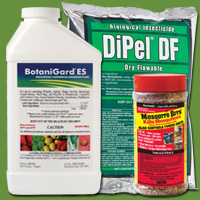No matter how we come to the place of making a change, our paths are lined with options.We have great freedom to pick and choose what works best for us. In my experience, working in the garden provides new opportunities for learning and decision-making every day.
 Over time, I’ve done an informal survey of my fellow organic gardeners asking them how they reached the idea that it was time to rethink our use of chemicals in our landscapes. Many came to the idea after a health scare or when a chemical they had used is suddenly labelled as carcinogenic. Some of us move to the organics gradually based on many reasons – for me it’s important to leave a smaller footprint both in what I take from the earth and what I leave behind. To do this, I try to move to increasingly sustainable methods of growing.
Over time, I’ve done an informal survey of my fellow organic gardeners asking them how they reached the idea that it was time to rethink our use of chemicals in our landscapes. Many came to the idea after a health scare or when a chemical they had used is suddenly labelled as carcinogenic. Some of us move to the organics gradually based on many reasons – for me it’s important to leave a smaller footprint both in what I take from the earth and what I leave behind. To do this, I try to move to increasingly sustainable methods of growing.
One of the most important developments in sustainable agriculture are the biorational pest and disease control products that are being developed and are increasingly available to farmers and home gardeners. It’s a wonderful world of selective products that are relatively non-toxic to humans, animals and beneficial insects. The use of biorationals fits well within an IPM (integrated pest management) strategy in which a keystone principal is monitoring for and identifying the specific pest that is in the landscape.
Biorational Pesticides fall into 3 general categories:
1. Botanicals are derived from plants. This category includes pyrethrins, azadiractin, neem oil, garlic and many others.
2. Microbial pesticides are formulated from beneficial micro-organisms or their by-products. This includes insecticides that are bacteria, fungi, nematodes and protozoa. One of the outstanding qualities of microbial pesticides is that they are very specific to the target pest and have little or no effect on other species.
3. Minerals are mined from the earth and processed minimally. Kaolin clay
(Surround WP) and iron phosphate (Sluggo) are examples of this category of biorational.
 Biorational Disease Controls are typically botanically based or microbial. In the disease control world, most of the microbial biorationals are bacteria or fungi.
Biorational Disease Controls are typically botanically based or microbial. In the disease control world, most of the microbial biorationals are bacteria or fungi.
Each of these categories, and indeed each biorational, deserves their moment in the sun. Stay tuned because we will be delving into many of the biorational control options in future posts. In the meanwhile, we would love to hear from you if you have questions about biorationals or a comment about one that has worked for you.





No comments:
Post a Comment